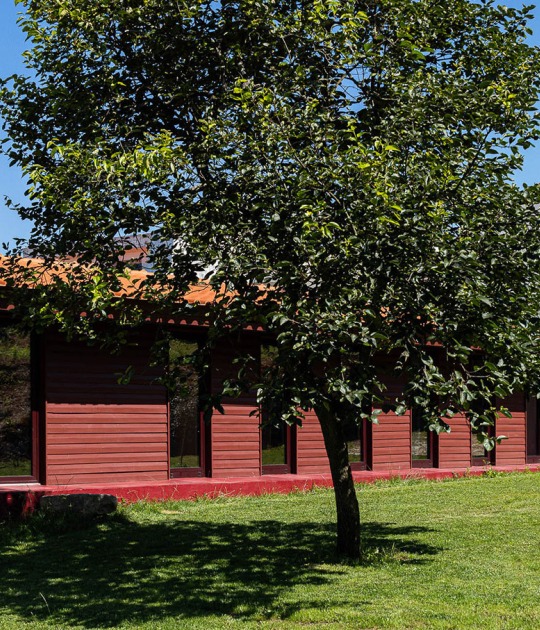The firm settled on a lightweight approach: a fully independent polycarbonate envelope positioned within the perimeter of the original structure. The established dialogue between the structure’s industrial past and its contemporary ecological context extends beyond its perimeter.
Description of project by Kokaistudios
In the Shanghai suburb of Baoshan, Kokaistudios has taken the first step in transforming a 450,000sqm site once known for steel production into a visionary eco-industrial park. entral to the project will be Baosteel’s new waste-to-energy power plant, and around it, a mixed-use landscape comprising wetland areas, a park, museum, and offices. Ahead of construction, Kokaistudios converted one of the site’s few remaining factory buildings into an Exhibition Center, and symbolic gateway to this landmark scheme.
Designed with the purpose of exhibiting models, drawings, and plans outlining the wider development, the Exhibition Center will welcome an audience of developers, clients, and prospective tenants of the broader scheme. The facility will also play an important educational role through hosting students studying green energy strategies. From an initial brief spanning programming including exhibition spaces and multimedia zones, F&B and VIP areas, a key priority was to build flexibility within the constraints of this preserved structure.
The site was formerly home to Baosteel’s primary steel mill. With a majority of its factory buildings demolished, the Exhibition Center occupies one of only a handful of original structures left on the plot. For Kokaistudios, this presented both an opportunity as well as a responsibility to preserve the project’s significant industrial heritage.
Although long abandoned, the 725sqm building was nonetheless striking thanks to its historic character. Kokaistudios’ design maintains these elements alongside innovative architectural interventions to render it fit for purpose.
Specifically, the firm settled on a lightweight approach: a fully independent polycarbonate envelope positioned within the perimeter of the original structure. Not only does the solution resolve several of the project’s technical issues - waterproofing, for example - the translucent material complements the bulk and weight of preserved piping and rusted machines housed within the inner casing.
The resulting aesthetic creates a clear relationship and dialogue between historical and contemporary, opacity and transparency, hot and cool. Furthermore, the material’s translucency affords plentiful natural light inside the space, allowing visitors a very literal glimpse into this landmark project. By night, light from inside the space lends the building an intriguing glow.
Inside, materials are kept similarly light and in keeping with the project’s broader ecological focus, fully recyclable. Alongside the polycarbonate facade and roof, floors are finished in concrete tiles, and the facility’s bathrooms feature stainless steel cladding. Throughout, cooler tones contrast with the structure’s former associations of blasting furnaces. An exception is the exhibition hall, where natural elements including wood veneer partitions connect to the parkland beyond; and colorful, freestanding furniture lends the space total flexibility.
The established dialogue between the structure’s industrial past and its contemporary ecological context extends beyond its perimeter. For example, alternating strips of stone tiles and steel slags - a by-product of the metal’s manufacturing, characterized by red-brown pebble-like objects - recall the site’s former function. Existing trees surrounding the building have been kept, creating an overall effect of the new Exhibition Center merging into the landscape beyond.
As a preliminary milestone of a multifaceted project, it was important to build flexibility at every level. In terms of the building itself, this was achieved through lightweight materials and a modular, pre-fabricated design. In addition to affording fast construction, optimizing both time and costs, the dry-build approach leaves open possibilities for future repurposing, or indeed, recycling.
Kokaistudios’ architectural renovation for Baoshan Exhibition Center sets a benchmark and precedent for the site’s broader project, specifically through its dialogue between industrial past and ecological future. Through a considered approach to materials both inside and out, the project preserves the structure’s significant legacy, all the while opening the space up to its future roles.



























































